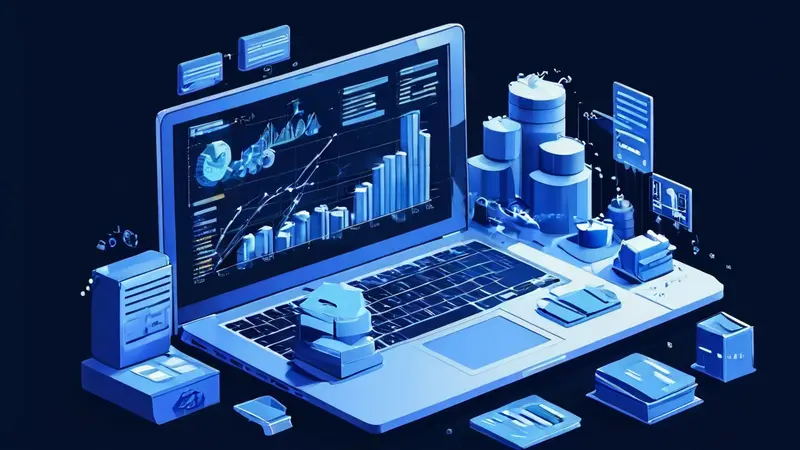The editor of Downcodes will give you an in-depth understanding of all aspects of office automation systems (OA). This article will explain in detail the core components, implementation significance, development trends and factors to be considered when purchasing the OA system, along with answers to frequently asked questions, to help you fully understand how the OA system can improve work efficiency, optimize office processes, and ultimately help enterprises achieve digitalization. transformation.

Efficiency and effectiveness at work usually rely on a coordinated and smooth office automation system, which is OA, or office automation. The core purpose of the OA system is to use automated information technology, optimize office processes*, increase data and information processing speed, and ultimately improve the work efficiency of the entire organization. OA systems usually include functions such as email, instant messaging, electronic document management, workflow automation, and conference management. Among these functions, electronic document management is a key component of the OA system. It can effectively manage and store various files, facilitate access and sharing, greatly improve work efficiency, and avoid the problems of traditional paper files being easily lost and damaged.
The construction of an OA system is inseparable from several key functional components, each of which carries specific functions to ensure the efficient operation of the system. The most common include:
Email system: The main communication tool within the organization and with the outside world. It supports the instant delivery and archiving of information. Instant messaging tools: Provide employees with a platform for instant communication, bringing a smoother work collaboration experience. Electronic document management system: Effectively manage the entire life cycle of documents from creation to archiving. This feature helps reduce the use of paper documents and facilitates quick retrieval and secure storage of documents.In order to ensure that various functional components can be seamlessly connected, the OA system also requires integrated components, which include:
Database management system: constitutes the core data storage and retrieval system of OA. Network infrastructure: supports data transmission and network communication of the OA system.By handling daily tasks electronically, OA systems significantly improve work efficiency. For example, workflow automation reduces manual processing time and ensures smooth and standardized processes.
Information sharing is an important part of improving work efficiency. The OA system makes information sharing simple, fast, safe and reliable by centrally managing data.
The OA system helps management to better support decision-making and improve the overall management level through detailed reports and analysis tools.
With the development of mobile technology, OA systems increasingly support mobile devices. Employees can access the office system anytime and anywhere to work remotely, which greatly improves work flexibility.
The rise of cloud computing has brought about changes in OA service models. More and more companies choose to deploy OA systems in the cloud to reduce costs and improve system stability and scalability.
Modern OA systems are integrating more analysis tools and using big data technology to help companies discover deficiencies in office models and make timely adjustments and improvements.
Information security is one of the biggest concerns for enterprises. An excellent OA system must provide strong security protection measures to ensure that data will not be leaked to unauthorized users.
In order to ensure that employees can get started quickly, the OA system needs to have a good user interface and intuitive operation process.
Enterprises have diverse workflows, and an excellent OA system should provide enough customization functions to adapt to the specific needs of the enterprise, and be easily expandable to accommodate future development.
The OA system is an important tool for office management, helping companies create an efficient and modern office environment. Whether in terms of information processing speed or work collaboration efficiency, with the assistance of OA systems, enterprises can better adapt to the rapidly changing business environment and maintain competitiveness.
1. What exactly does OA refer to?
OA is the abbreviation of "Office Automation", which is a management method that uses information technology to improve office efficiency. It includes office software, office equipment, office processes and office management. Through the application of OA system, functions such as email, document management, meeting arrangement, resource sharing, etc. can be realized, which greatly improves office efficiency.
2. What benefits does the OA system bring to the enterprise?
The application of OA systems has multiple benefits for enterprises. First of all, the OA system can effectively improve work efficiency and reduce manual operations and time costs through automated processes and systematic management. Secondly, the OA system can promote information sharing and coordination. Through a unified data management platform, it achieves centralized storage and sharing of information, reducing communication and coordination difficulties. In addition, the OA system can also improve work transparency and monitoring. Through real-time data and report analysis, work progress and problems can be understood in a timely manner, providing a reference for decision-making.
3. How to choose an OA system suitable for your enterprise?
There are many factors that need to be considered when choosing an OA system that is suitable for your business. First of all, the required functions must be determined according to the size and characteristics of the enterprise. Different enterprises have different needs, so the selection must be based on the actual situation. Secondly, we must consider the stability and security of the system. After all, enterprise information is a very important asset, and the security and reliability of the system must be ensured. In addition, the ease of use and scalability of the system must also be considered. An easy-to-use and flexible and scalable system is very important for future development. Finally, the cost and services of the system must also be considered, and a suitable OA system must be selected based on budget and service needs.
I hope this interpretation by the editor of Downcodes can help you! Choosing an appropriate OA system is a key step in improving corporate office efficiency. To learn more about the OA system, please continue to pay attention to Downcodes.